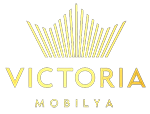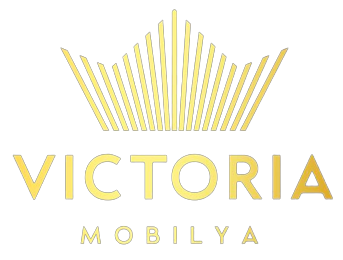
Examples of pure assets are air, water, wooden, oil, wind energy, pure gasoline, iron, mineral and coal. What distinguishes natural assets from different materials is their origin in natural processes quite than human creation. While people may course of or modify these resources, their fundamental existence is independent of human exercise. For occasion, while crude oil exists naturally, gasoline is a processed by-product and subsequently not thought-about a natural resource itself. Natural what does natural resources mean assets are materials and parts found in the environment, corresponding to air, water, soil, vegetation, and minerals, that exist independently of human exercise and are important for sustaining life and supporting financial manufacturing.
This helps maintain biodiversity and retains our planet’s ecosystems in stability. In 1982, the United Nations developed the World Constitution for Nature, which recognized the necessity to protect nature from additional depletion because of human exercise. It states that measures have to be taken at all societal levels, from worldwide to particular person, to protect nature. Since the event of those documents, many measures have been taken to protect natural resources including institution of the scientific field and practice of conservation biology and habitat conservation, respectively. For instance, the depletion of nutrients in the soil because of extreme use of nitrogen20 and desertification.11The depletion of natural assets is a seamless concern for society.
The Sustainability Problem 🔗
It is projected that fossil-based resources will finally become too expensive to reap and humanity might need to shift its reliance to renewable energy such as solar or wind energy. Have you ever stopped to think about the very components that maintain life on our planet? What is natural assets, and why do they play a pivotal position in our survival, economic system, and environment? From the water we drink to the minerals utilized in our smartphones, natural sources are the uncooked materials supplied by nature that shape our on a regular basis lives. In this complete information, we’ll discover everything you have to learn about what is pure resources—its definition, important characteristics, historical evolution, real-world purposes, and fashionable relevance. Whether you’re a student, educator, policymaker, or just a curious reader, this submit will equip you with the insights essential to know and appreciate the natural assets that underpin our world.
This is seen within the cited quote given by Theodore Roosevelt, a properly known https://www.business-accounting.net/ conservationist and former Usa president, who was against unregulated pure resource extraction. Pure useful resource allocations can be at the centre of many economic and political confrontations both within and between nations. This is particularly true in periods of increasing scarcity and shortages (depletion and overconsumption of resources).
- This can involve establishing worldwide agreements, sharing greatest practices, and providing monetary and technical help to creating international locations.
- It would possibly look like an exaggeration, but our planet’s pure assets are finite and precious.
- They are derived from the Earth and include every little thing from water and air to minerals and forests.
- There could also be a sensible limit to how a lot can be taken in a given day or yr, however that quantity can be taken again next day or subsequent yr (though not forever).
They are crucial for the production of energy, goods for industry, and meals. Its availability has a direct impact on employment across a wide range of industries. The wealth of pure resources makes a rustic affluent as a outcome of it might be used to create financial capital. Humans use pure assets for lots of functions, together with acquiring food, shelter, water, gas, minerals, and other raw supplies. We also use them for recreation and to help our financial actions.
Demand
Water is crucial for all life and numerous human activities, including agriculture, industry, and domestic use. While water is a renewable resource through the hydrological cycle (evaporation, precipitation, runoff), its availability and quality are more and more threatened by air pollution, over-extraction, and local weather change. Managing water assets sustainably is essential for guaranteeing entry to wash and protected water for all. These ecosystems present homes and meals for so much of plant and animal species. When we preserve forests, wetlands, and different pure areas, we defend the habitats that help all kinds of life.
A naturally occurring commodity usually is classed as a natural useful resource when it’s extracted or purified from its natural state quite than being created. Second, the resource must have the ability to be exploited by humans to immediately fulfill a necessity or want. Copper, tuna, and air fulfill such a requirement (with air supplying a necessity, as a situation for life), whereas an infectious parasite or mosquito doesn’t (although the parasite or mosquito might present an indirect benefit as part of nature, such as a half of food chains). By taking these steps, you not solely deepen your personal understanding of natural resources but in addition contribute to a world effort to manage our planet’s belongings responsibly. Collectively, we are able to work toward a future where economic improvement, environmental sustainability, and cultural heritage are in harmony.
Natural resources are materials and substances that happen naturally in the environment. They can be renewable, like air and water, or non-renewable, like oil and coal. “SWFs have historically been arrange by states wealthy in pure resources to manage their budgetary surplus, diversify their economies, and defend their wealth for future generations,” observed the Carnegie Endowment’s Feldstein and Vittori.
This approach focuses on the cautious and accountable administration of natural assets in a method that balances financial, environmental, and social needs. Understanding what’s natural sources is prime for making informed decisions—whether you’re a client selecting sustainable products, a policymaker crafting environmental laws, or a business chief implementing green practices. Natural sources are the inspiration of our economies, the lifeblood of our ecosystems, and the heritage of our planet.
By managing them correctly, we will promote economic stability, shield the setting, and guarantee a prime quality of life for current and future generations. Pure sources characterize the muse upon which human civilization is constructed. They embody a vast array of substances, from the air we breathe and the water we drink to the minerals we mine and the forests we harvest. Their value lies in their utility, their shortage, and their accessibility. Understanding the differing types, their formation, and sustainable administration is crucial for making certain both financial prosperity and environmental protection. Pure resources similar to coal, petroleum (crude oil) and natural gas take thousands of years to type naturally and cannot be changed as quick as they’re being consumed.
In today’s quickly changing world, the understanding and administration of pure assets are more crucial than ever. Advances in expertise, increasing environmental consciousness, and international financial pressures are all shaping how we interact with our planet’s pure assets. A natural resource is what folks can use from the pure surroundings.
